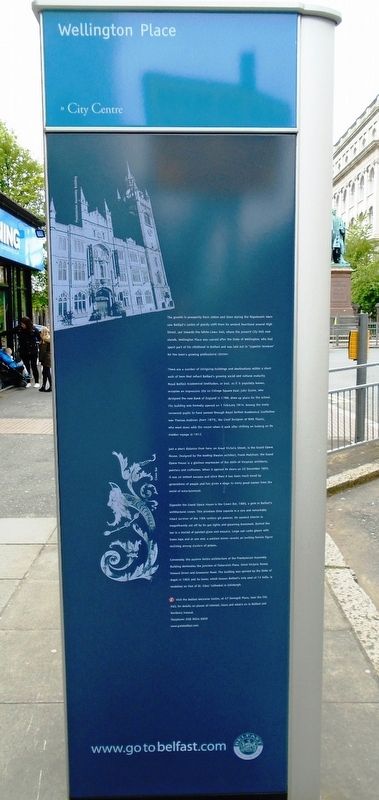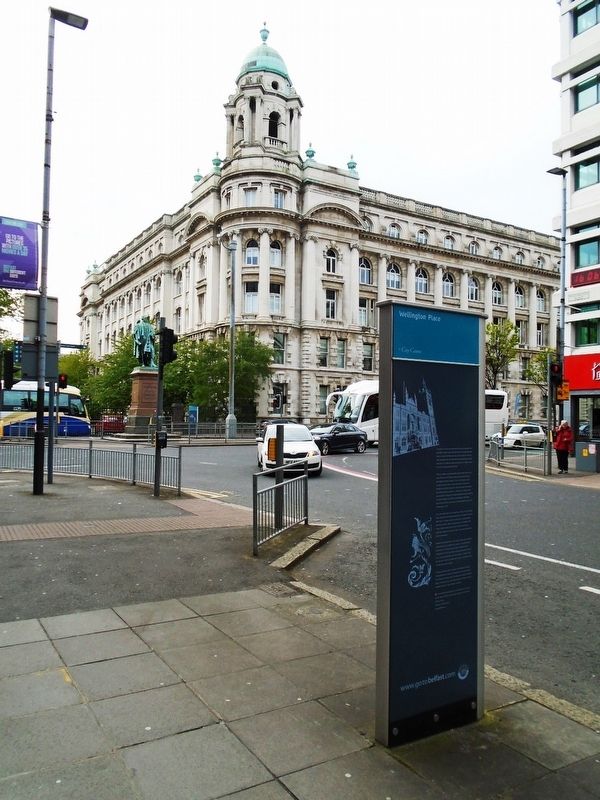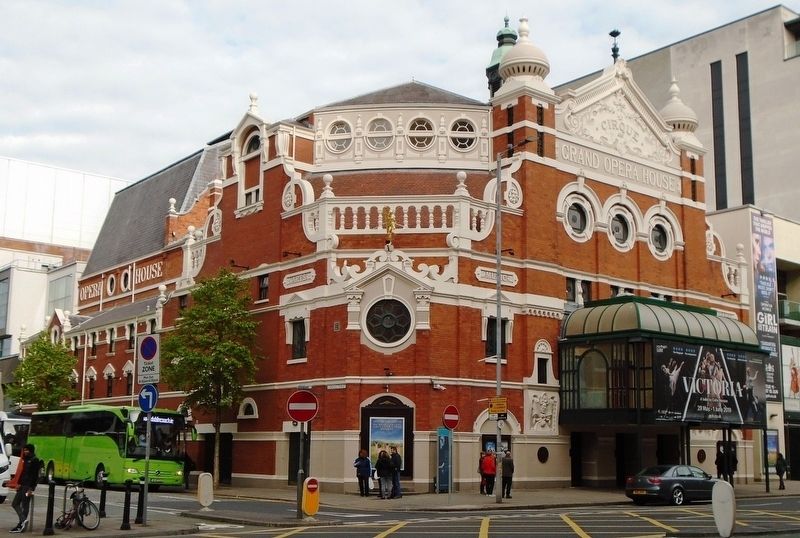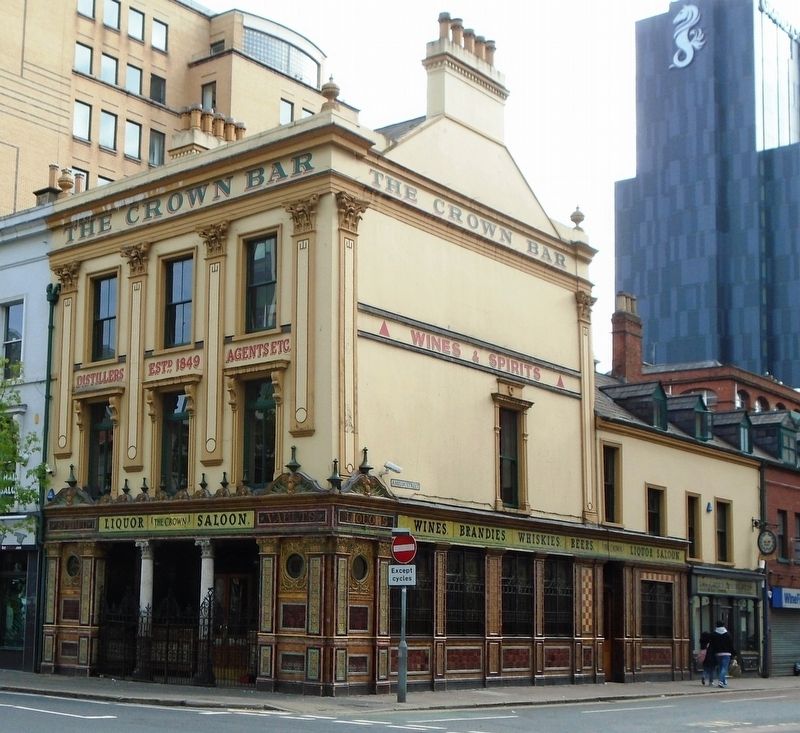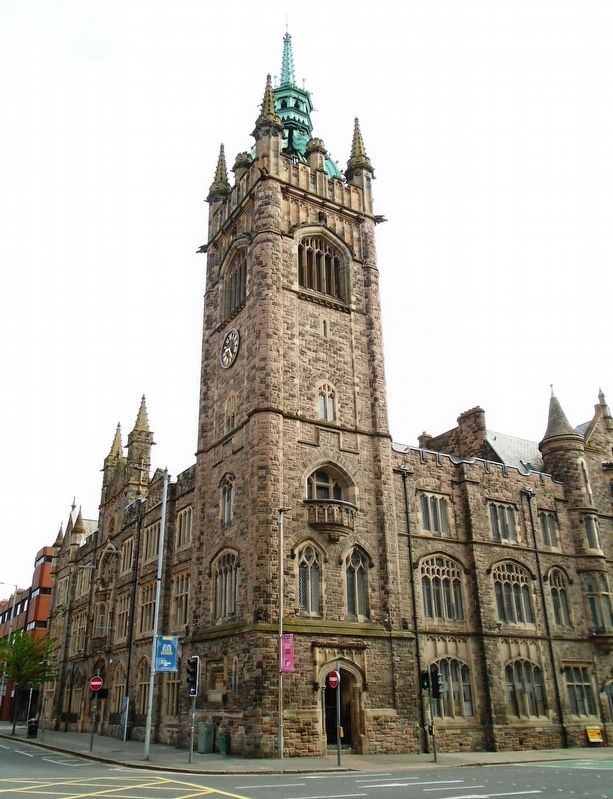Wellington Place
City Centre
The growth in prosperity from cotton and linen during the Napoleonic wars saw Belfast's centre of gravity shift from its ancient heartland around High Street, out towards the White Linen Hall, where the present City Hall now stands. Wellington Place was named after the Duke of Wellington, who had spent part of his childhood in Belfast and was laid out in "superior terraces" for the town's growing professional classes.
There are a number of intriguing buildings and destinations within a short walk of here that reflect Belfast's growing social and cultural maturity. Royal Belfast Academical Institution, or Inst. as it is popularly known, occupies an impressive site on College Square East. John Soane, who designed the new Bank of England in 1788, drew up plans for the school. The building was formally opened on 1 February 1814. Among the many renowned pupils to have passed through Royal Belfast Academical Institution was Thomas Andrews (born 1873), the Chief Designer of RMS Titanic, who went down with the vessel when it sank after striking an iceberg on its maiden voyage in 1912.
Just a short distance from here, on Great Victoria Street, is the Grand Opera House. Designed by the leading theatre architect, Frank Matcham, the Grand Opera House is a glorious expression of the skills of Victorian architects, painters and craftsmen.
When it opened its doors on 23 December 1895, it was an instant success and since then it has been much loved by generations of people and has given a stage to many great names from the world of entertainment.Opposite the Grand Opera House is the Crown Bar, 1885, a gem in Belfast's architectural crown. This priceless time capsule is a rare and remarkably intact survivor of the 19th century gin palaces. Its opulent interior is magnificently set off by its gas lights and gleaming brasswork. Behind the bar is a myriad of painted glass and mosaics. Large oak casks gleam with brass taps and at one end, a painted mirror reveals an inviting female figure reclining among clusters of grapes.
Conversely, the austere Gothic architecture of the Presbyterian Assembly Building dominates the junction of Fisherwick Place, Great Victoria Street, Howard Street and Grosvenor Road. The building was opened by the Duke of Argyll in 1905 and its tower, which houses Belfast's only peal of 12 bells, is modelled on that of St. Giles' Cathedral in Edinburgh.
Erected by the City of Belfast.
Topics. This historical marker is listed in this topic list: Notable Buildings. A significant historical date for this entry is February 1, 1814.
Location. 54° 35.824′ N, 5° 56.058′ W. Marker is in Belfast, Northern Ireland. Marker is on Wellington
Other nearby markers. At least 8 other markers are within walking distance of this marker. Lord Kelvin OM (within shouting distance of this marker); Royal Belfast Academical Institution (within shouting distance of this marker); Presbyterian Assembly Building (about 120 meters away, measured in a direct line); Francis Maginn (about 120 meters away); Howard Street (about 150 meters away); Barney Hughes (about 150 meters away); Donegall Square North (about 150 meters away); Thomas Russell (about 180 meters away). Touch for a list and map of all markers in Belfast.
Also see . . .
1. Belfast City Hall. (Submitted on May 23, 2019, by William Fischer, Jr. of Scranton, Pennsylvania.)
2. The Royal Belfast Academical Institution. (Submitted on May 23, 2019, by William Fischer, Jr. of Scranton, Pennsylvania.)
3. Grand Opera House, Belfast. (Submitted on May 23, 2019, by William Fischer, Jr. of Scranton, Pennsylvania.)
4. Presbyterian Assembly Buildings, Belfast. (Submitted on May 23, 2019, by William Fischer, Jr. of Scranton, Pennsylvania.)
Credits. This page was last revised on January 9, 2022. It was originally submitted on May 23, 2019, by William Fischer, Jr. of Scranton, Pennsylvania. This page has been viewed 711 times since then and 357 times this year. Photos: 1, 2. submitted on May 23, 2019, by William Fischer, Jr. of Scranton, Pennsylvania. 3, 4. submitted on May 13, 2019, by William Fischer, Jr. of Scranton, Pennsylvania. 5. submitted on May 15, 2019, by William Fischer, Jr. of Scranton, Pennsylvania.
